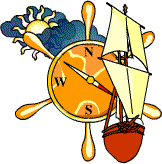Thor Heyerdahl
Created | Updated Jun 12, 2002

Thor Heyerdahl, adventurer, explorer, ethnologist, and author, died on Thursday 18th of April 2002, at about seven o'clock in the evening at his home in the Italian Riviera aged 87 years.
Heyerdahl was born in Larvik, Norway on October 6th, 1914. He began his studies of zoology and geography at the University of Oslo until leaving in 1937 for an expedition to Polynesia with his wife Liv. They made their first stop at the group of islands called Marquesas and the island Fatuhiva, to study the plant and animal life there. Though Heyerdahl was actually more interested in the origin of the aboriginal population on these isolated Pacific islands, and in 1941 he published the now famous theory that Polynesia was populated by immigration from Peru and Colombia.
Interrupted by the outbreak of the Second World War, Heyerdahl returned to Norway to volunteer for the Free Norwegian Forces, eventually serving in a Norwegian parachute unit in Finnmark.
After the war, Heyerdahl continued his research, only to meet a wall of resistance to his theories amongst contemporary scholars. To add weight to his arguments, Heyerdahl decided to build a replica of the aboriginal balsa raft to test his theories. To prove that it would have been possible to sail over the Pacific to Polynesia, Heyerdahl set out on the same journey. On April 28th 1947 he sailed with the raft 'Kon-Tiki1' and a crew of five, from Callao in Peru. They reached the Tuamotu islands in Polynesia on August 7th, the 8000 kilometre crossing taking 101 days. Despite scepticism, the seaworthiness of the aboriginal raft had been proved. The experiment showed that the ancient Peruvians could have reached Polynesia in this manner. The raft was built as a copy of an old Peruvian balsa raft, and is exhibited at the Kon-Tiki Museum at Bygdøy in Oslo, Norway. A documentary about the Kon-Tiki expedition was awarded an Oscar in 1951 - so far the only Oscar that has gone to Norway.
The journey from Peru to Polynesia was followed by expeditions to, among other places, the Galapagos Islands in 1953, and to Easter Island in 1955-56. On both these expeditions he found more evidence to support his theory about Polynesia and the contact with South
America.
Heyerdahl's Ra expeditions in 1969 and 1970 showed the reed boats' ability for sea-journeys. With a crew of six he sailed in 1969 from Morocco to America in the reed boat 'Ra', made of papyrus and modelled after ancient Egyptian models. The first trip failed, a second attempt in 1970, the 'Ra II' succeeded. 'Ra II' sailed from Morocco to Barbados, (a distance of 5700 km) in just 57 days. In 1977 Heyerdahl organized another expedition with a reed boat, the 'Tigris', which sailed from Iraq to Djibouti.
In the 80's and 90's Heyerdahl led archaeological projects in the Maldives, Easter Island and in Tucume in Peru.
His last project was called 'Odin in Azov'. Working from theories based on Snorri Sturlason's writings from the 13th century, he began work on the possible connections between Nordic mythology and today's Aserbajdsjan.
Thor Heyerdahl had a strong dedication to international environmental work, and received numerous diplomas as well as honorary doctorates from 11 universities, including his alma mater, the University of Oslo. In the last years of his life, Thor Heyerdahl made his home in Tenerife, the Canary Islands, and at Colla Micheri, near Alassio by the Italian Riviera.
Visit Thor Heyerdahl Expeditions and Kon-Tiki Museum for more information about Thor Heyerdahl and his work.
